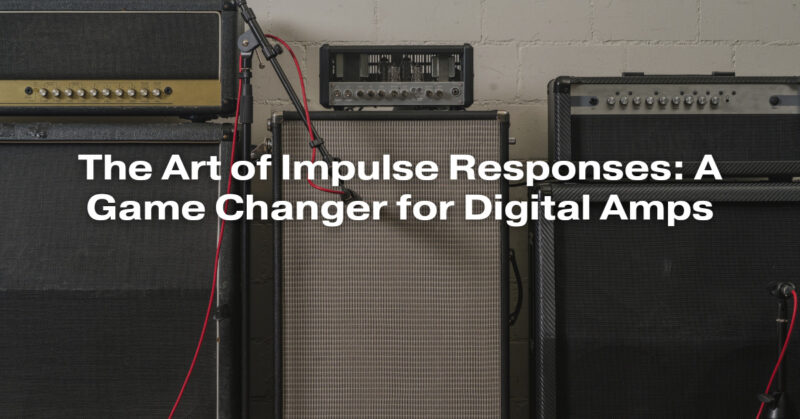In the world of digital amplifiers and amp modeling, the use of impulse responses (IRs) has emerged as a revolutionary tool for achieving realistic and studio-quality guitar tones. Impulse responses capture the essence of real speaker cabinets and room environments, allowing guitarists to simulate the sound of classic amplifiers and speaker combinations with remarkable accuracy. In this article, we’ll explore the art of impulse responses, how they work, and why they are a game-changer for digital amps.
What Are Impulse Responses?
Impulse responses, often abbreviated as IRs, are digital snapshots of a specific audio environment, typically the sound of a guitar speaker cabinet and the room it’s placed in. They are created by capturing the response of a speaker and its surrounding space to a short, broadband signal, known as an impulse. This captured audio data is then used to recreate the characteristics of that speaker and room when applied to a guitar signal.
How Impulse Responses Work:
- Capture: To create an IR, a microphone is placed in front of a guitar speaker, and a short, loud burst of sound (the impulse) is played through the speaker.
- Recording: The microphone records the sound produced by the speaker and the room reflections. This recording captures the unique frequency response, phase, and spatial characteristics of that specific speaker and room.
- Processing: The recorded audio is then processed using specialized software to create an impulse response file, which contains all the information about how the speaker and room affect the sound.
- Application: Guitarists can load this IR file into a digital amp modeler or an IR loader, allowing them to apply the captured speaker and room characteristics to their guitar signal.
Why Impulse Responses Are a Game Changer:
- Authenticity: Impulse responses provide an unparalleled level of authenticity when recreating classic guitar tones. They accurately replicate the unique sound of iconic speaker cabinets and room acoustics.
- Tonal Versatility: With IRs, guitarists can experiment with a wide range of speaker and cabinet combinations without the need for physical equipment. This versatility allows for endless tone-shaping possibilities.
- Portability: Digital amp modelers and IR loaders are compact and portable, making them ideal for both studio and live performances. Musicians can access a vast collection of tones in a compact setup.
- Consistency: Impulse responses offer consistent results every time, eliminating variations that can occur with mic placement and room acoustics when miking a physical cabinet.
- Recording Flexibility: When recording, IRs enable guitarists to achieve studio-quality sounds at any volume level, as they can capture the speaker’s characteristics silently without the need for a loud amp.
Tips for Using Impulse Responses:
- Experiment: Don’t hesitate to try different IRs and combinations to find the perfect tone for your music.
- Blend IRs: Some players blend multiple IRs to create a unique tone. For example, combining a close-miked IR with a room IR can add depth and realism.
- Match the IR to Your Amp Model: Different amp models and IRs may have varying impedance characteristics. Make sure the IR matches the output impedance of your amp modeler for the best results.
- Explore Room IRs: Room impulse responses can add ambiance and dimension to your sound. Experiment with different room sizes and mic placements.
In conclusion, impulse responses have revolutionized the world of digital amplifiers and amp modeling by providing an authentic and versatile means of capturing the essence of classic guitar tones. Whether you’re a studio musician seeking tonal perfection or a live performer looking for portability and consistency, the art of impulse responses has become an indispensable tool for achieving exceptional guitar tones in the digital age.


